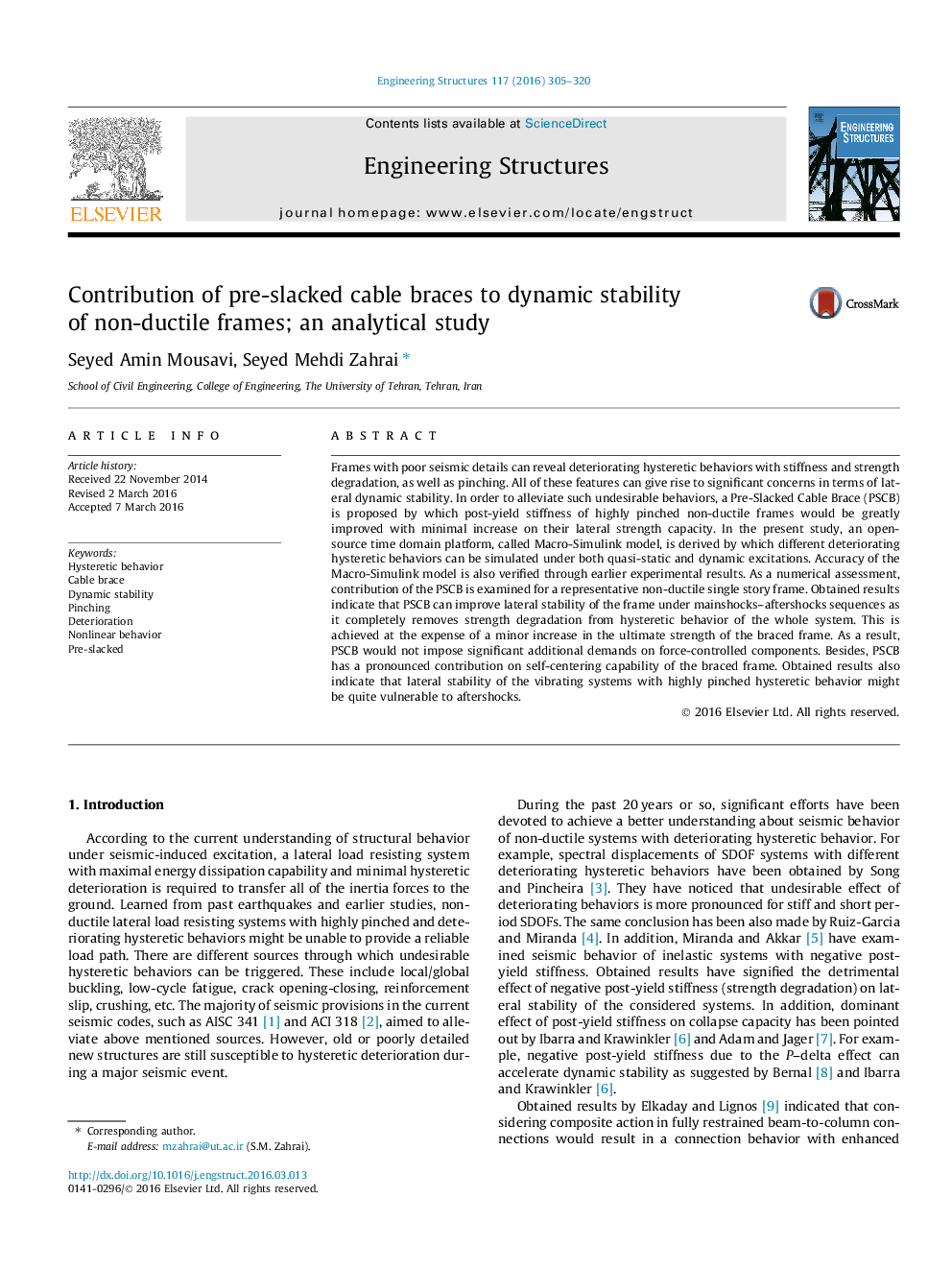| Article ID | Journal | Published Year | Pages | File Type |
|---|---|---|---|---|
| 6740003 | Engineering Structures | 2016 | 16 Pages |
Abstract
Frames with poor seismic details can reveal deteriorating hysteretic behaviors with stiffness and strength degradation, as well as pinching. All of these features can give rise to significant concerns in terms of lateral dynamic stability. In order to alleviate such undesirable behaviors, a Pre-Slacked Cable Brace (PSCB) is proposed by which post-yield stiffness of highly pinched non-ductile frames would be greatly improved with minimal increase on their lateral strength capacity. In the present study, an open-source time domain platform, called Macro-Simulink model, is derived by which different deteriorating hysteretic behaviors can be simulated under both quasi-static and dynamic excitations. Accuracy of the Macro-Simulink model is also verified through earlier experimental results. As a numerical assessment, contribution of the PSCB is examined for a representative non-ductile single story frame. Obtained results indicate that PSCB can improve lateral stability of the frame under mainshocks-aftershocks sequences as it completely removes strength degradation from hysteretic behavior of the whole system. This is achieved at the expense of a minor increase in the ultimate strength of the braced frame. As a result, PSCB would not impose significant additional demands on force-controlled components. Besides, PSCB has a pronounced contribution on self-centering capability of the braced frame. Obtained results also indicate that lateral stability of the vibrating systems with highly pinched hysteretic behavior might be quite vulnerable to aftershocks.
Related Topics
Physical Sciences and Engineering
Earth and Planetary Sciences
Geotechnical Engineering and Engineering Geology
Authors
Seyed Amin Mousavi, Seyed Mehdi Zahrai,
